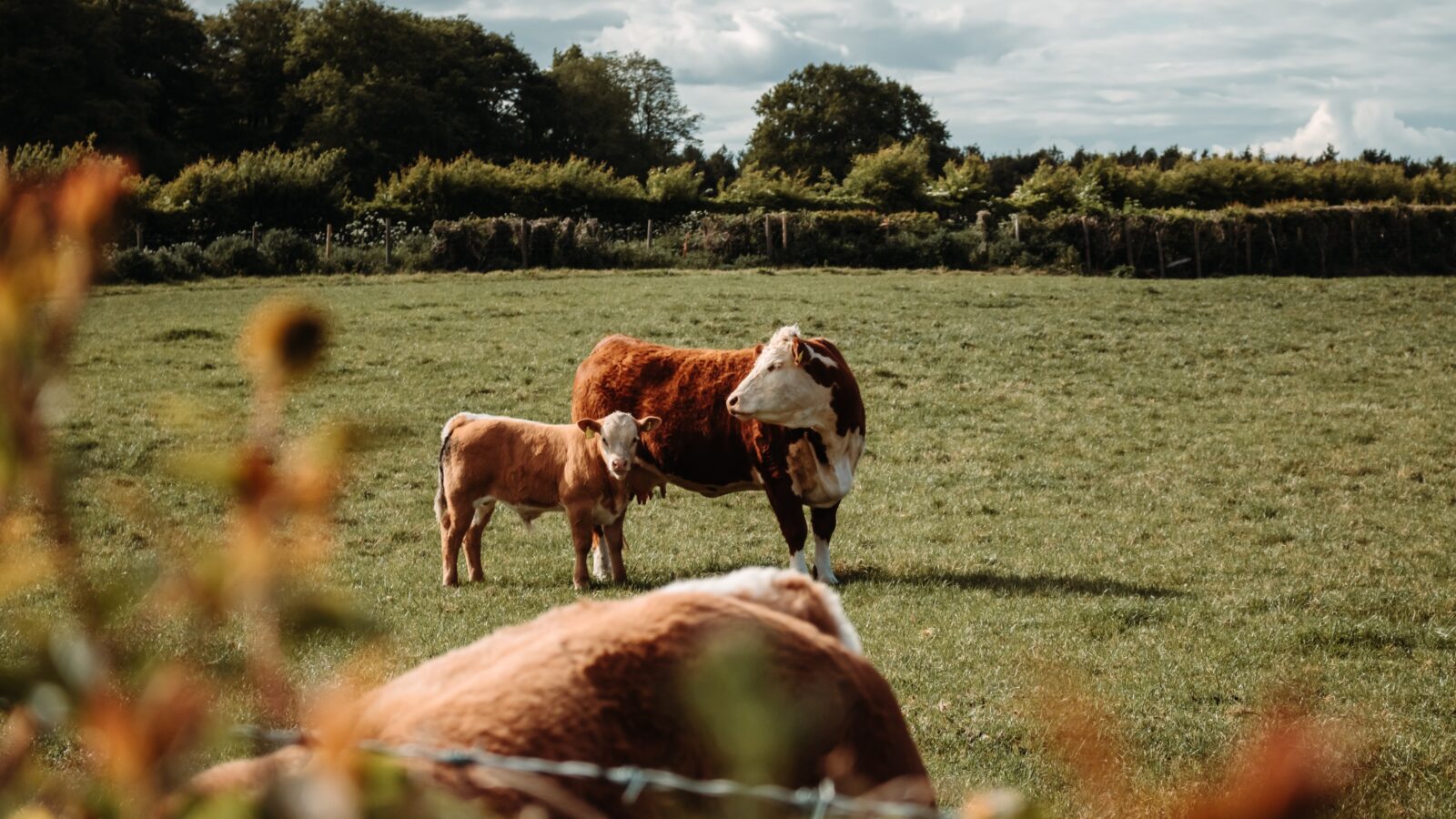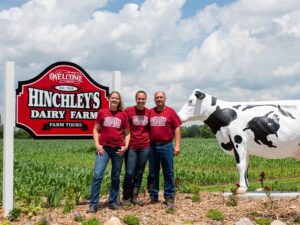
Tina Hinchley is a dairy farmer in Cambridge, Wisconsin – America’s dairy land. She and husband Duane grow around 2,300 acres of crops, not only to be used as cattle feed but also for ethanol, and milk around 240 cows every day – or, rather, their milking robots do!
She spoke to us about how technology has transformed Hinchley’s Dairy Farm and how it is business as usual despite the Covid-19 pandemic.
 Tina, how long has Hinchley’s Dairy Farm been in your family?
Tina, how long has Hinchley’s Dairy Farm been in your family?
My father and mother-in-law purchased the farm back in 1958, and my husband Duane and I then bought it from my father-in-law in 2000. My older sons Curtis and Spencer have left to follow their own passions but my twin daughters Anna and Catherine still live on the farm. Anna is about to graduate from the University of Wisconsin-Madison with a degree in dairy science and plans to take over the farm one day.
How much land and how many cows do you have?
We have 2,300 acres of land growing crops such as soybeans, corn, wheat, alfalfa and pumpkins.
We also have over 400 registered dairy cattle and milk about 240 cows throughout the day, every day of the year.
What does sustainability mean for you?
It’s our goal to be socially, economically and environmentally sustainable, while providing our cows with the best comfort possible using the technology we have invested in.
We have been running farm tours for over 20 years – we see it as a great opportunity to get socially sustainable with the community and advocate for agriculture. It’s eye-opening for visitors to see how passionate we are about the land and the water we use and about our animals.
Why did you decide to invest in robotics technology for the farm?
Many of the tasks we do, such as pushing in feed for the cows to eat, involve a lot of hard work. It’s tough on your shoulders, hips and knees. Robots ease the strain.
Previously, we had to scrape the floors of the barn before milking, but now robots whizz round and take care of the manure for us.
Also, when my daughter Anna takes over the farm, she has no desire to be milking 9 hours a day; she wants to focus on other aspects of dairy farming such as cow comfort and health. Investing in milking robots has made that possible.
What are some of the key benefits you have seen as a result?
Using robots has saved labor, boosted our milk production and freed up our time to do other things, like going to the movies and, most importantly, being better farm managers.
Robots are the future of our farm. If we didn’t have them, our future would be selling cows.
Ultimately, in order to stay in the industry, you have to keep improving, and technology is there for farmers to take advantage of. This technology makes life easier and improves productivity. For us, it represents future labor, future health and future happiness.
How are robotics and technology helping you to be better managers?
A key benefit of the technology we use is that it provides us with data, accessible via our mobile phones, on important issues such as udder health. If one of the cows is not well, we can pinpoint which one it is and ensure proper medical treatment. There is also a camera app which allows us to monitor the cows going in and coming out of the milking robot, 24/7. Generally, if something is wrong, the robot lets us know so that we can address the issue.
You mentioned cow comfort. What are you doing to facilitate it at the farm?
We’ve tried to make the barn as comfortable as possible for the cows so that they’re free to do what they want when they want – whether that’s eating, drinking or being milked – which some of them want to do as many as six times a day! We even have special Lely Luna cow brushes so that the cows can go and have a brush or a scratch when they feel like it.
What impact has Covid-19 had on you as a business?
We are still farming as we always have done. We have always cared about our cows and taking care of the land and water and being as sustainable as we possibly can be, and that doesn’t change in circumstances like these. We’re taking extra precautions on the farm, wearing surgical gloves and keeping a safe distance from each other, and we’re encouraging anyone who doesn’t feel well not to come to work.
One of the positive things to come out of the pandemic is that people are realizing where their food comes from, and they’re really valuing what they eat.


